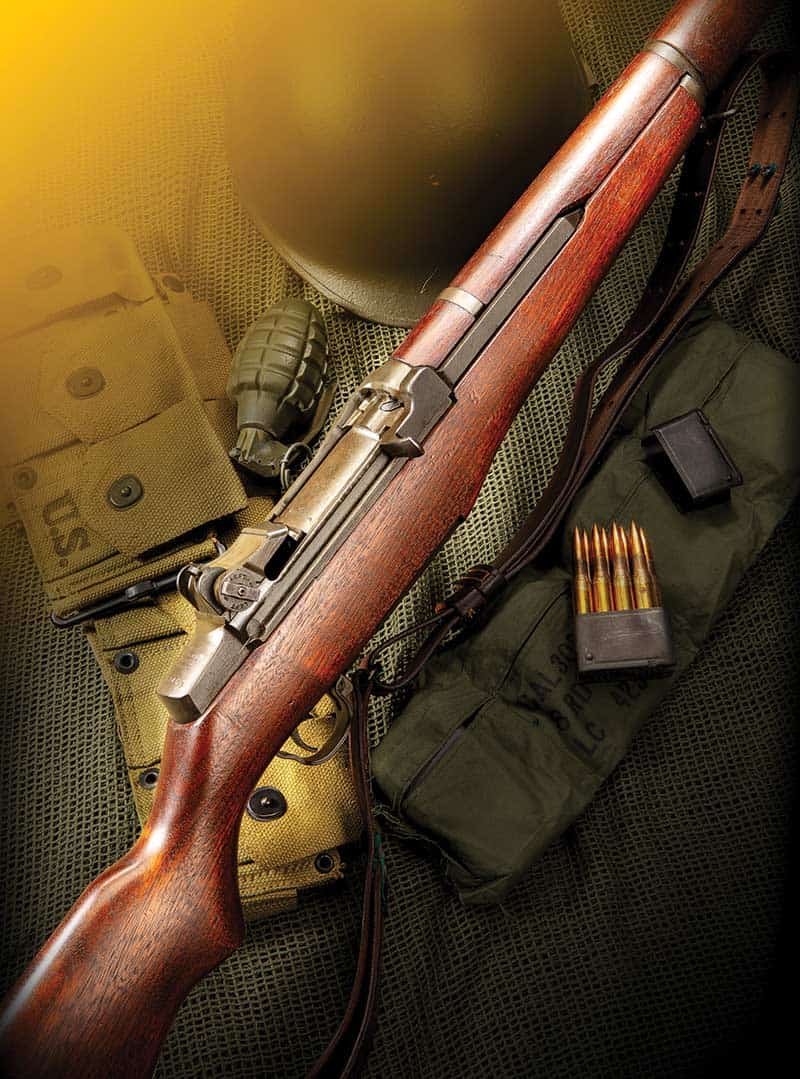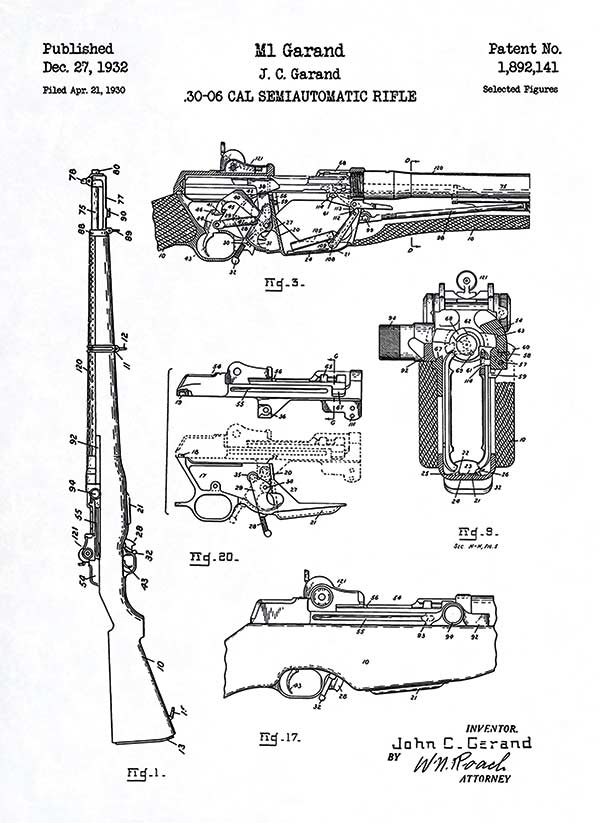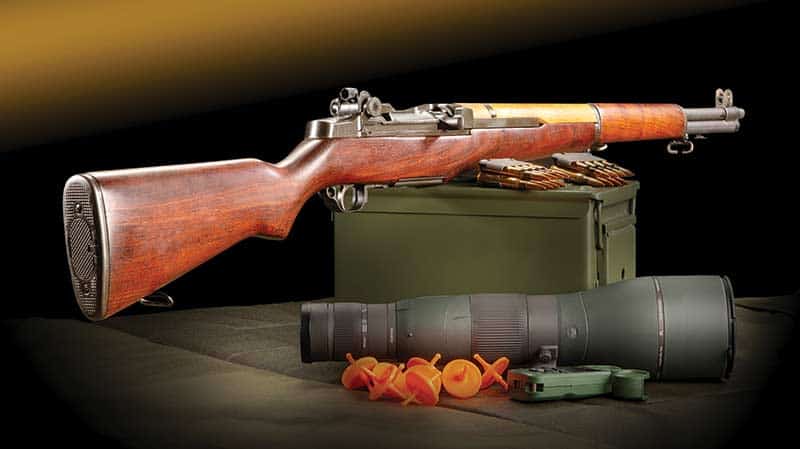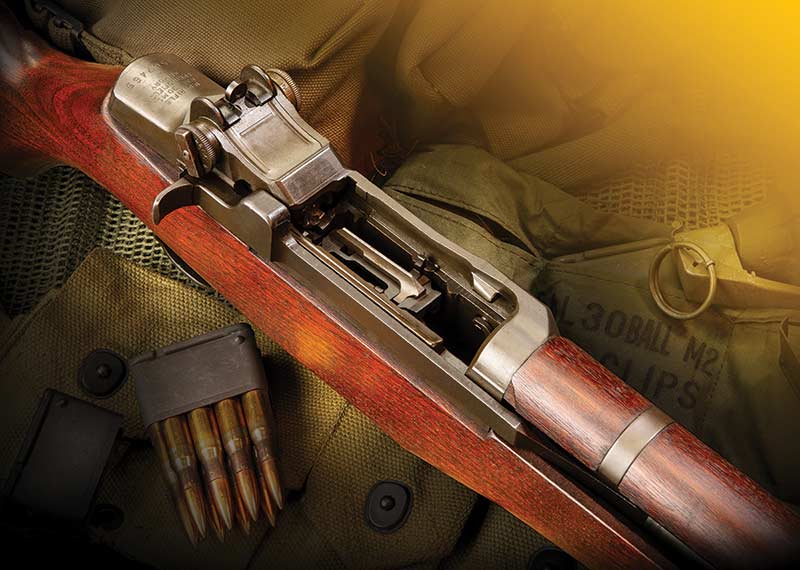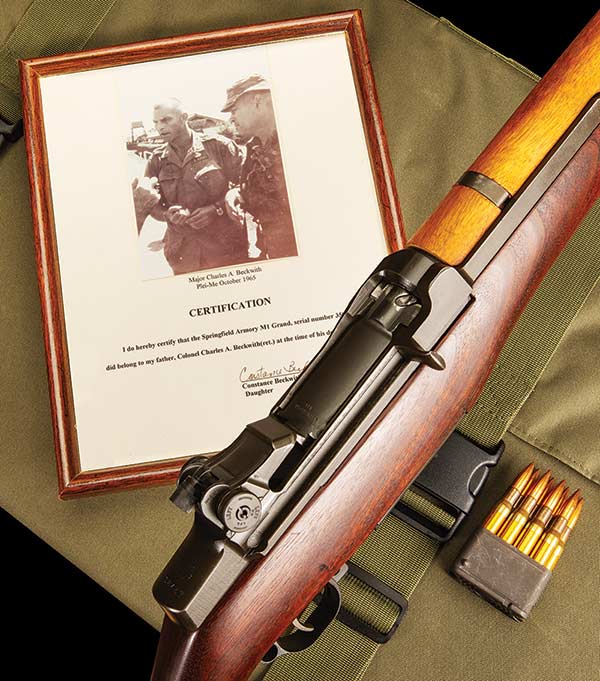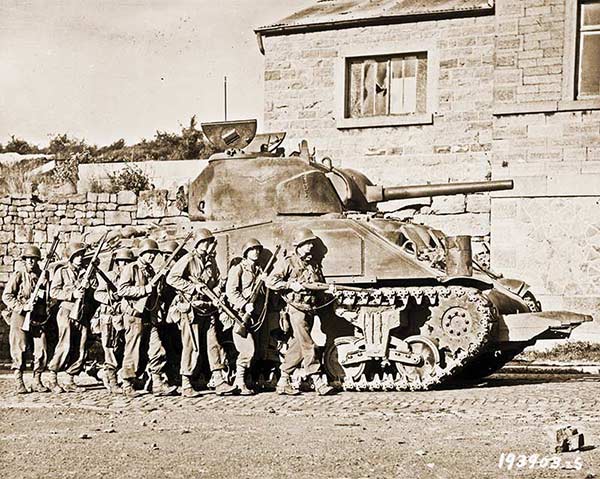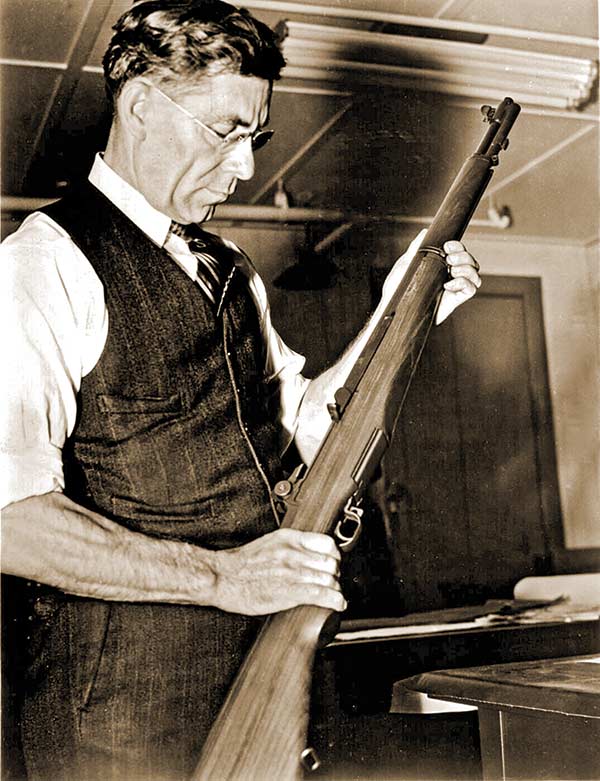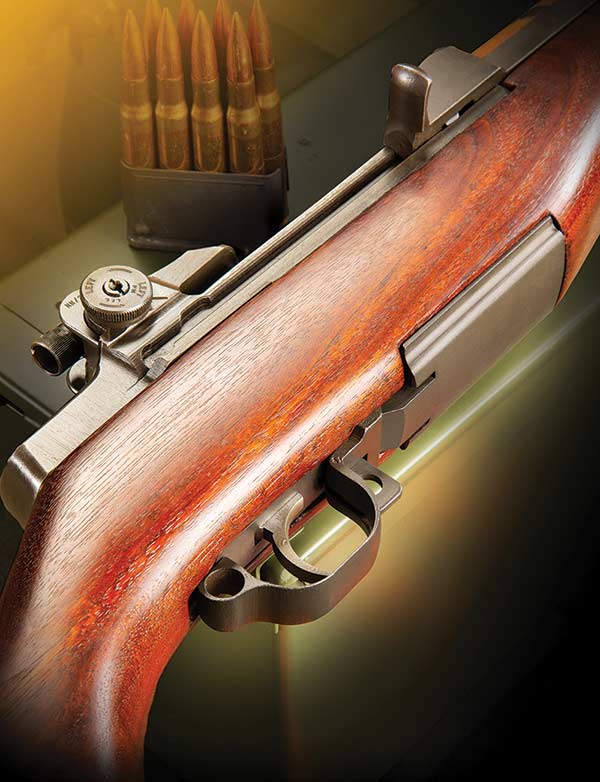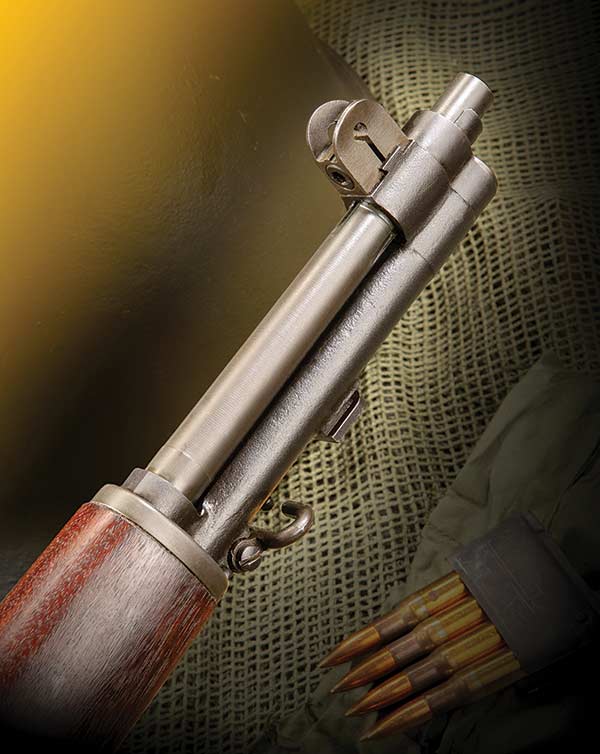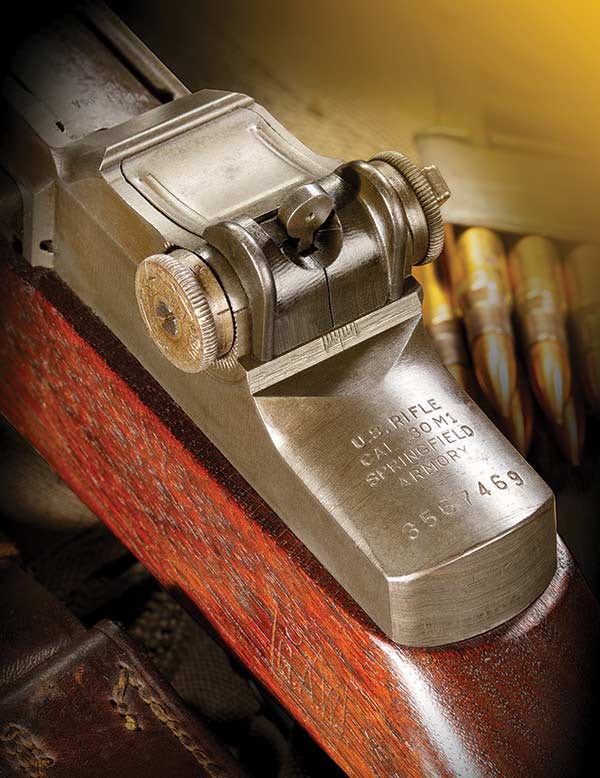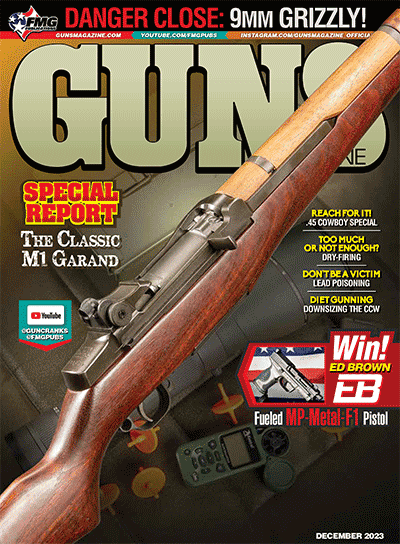The Classic M1 Garand
America's Greatest Battle Rifle
Part 1 Garand Tech: Mechanical Perfection?
Miracles can occur and the development of the M1 Garand might just qualify as one. This particular miracle had a bit of help thanks to the hard work of its inventor, John Garand, and a host of others. John Garand (pronounced “Gare-Rand” with the emphasis on the first syllable) was in actuality simply a civil service employee of the U.S. government. During his tenure at Springfield Armory, he put his talents to good use, eventually developing the final model of what would become the famous M1 rifle of WWII. Interestingly enough, Garand never saw a penny from his invention, other than from his base salary as a government employee.
At the start of WWII, the U.S. was the sole country equipping its soldiers with a semi-auto battle rifle. Early in the war the Springfield bolt-action rifle was still issued to tens of thousands of GIs but as the war progressed and production ramped up, the “Garand” soon became the frontline battle rifle, proving its mettle countless times.
As General George Patton said in a letter: “In my opinion, the M1 rifle is the greatest battle implement ever devised.”
But what made it so perfect for the time it was needed?
John Garand didn’t invent the M1 in a windfall of brilliant ideas. It took the years from 1924 to when the rifle was adopted in 1935 to hone the design and gain acceptance from leadership born in the 19th century, used to single shot rifles and bolt actions. But the M1 in the form of Garand’s brilliant design, soon outshined the mindset of these generals and politicians as it proved itself, dominating the battlefields around the world.
Garand set out to design a reliable, powerful and accurate semi-auto rifle, suitable for the rugged conditions of a modern battlefield and able to be manufactured in quantity and handled by novice soldiers. His honing of the gas-operated system, reliable “en-bloc” 8-round clip to assure fast loading and the additional revolutionary design and engineering to make the system function, simply outperformed the enemy’s frontline rifles. WWII German troops initially thought American GIs were all equipped with machine guns!
The M1’s gas operation is simple, elegant and reliable. The rifle is loaded from the top via the 8-round clip, a spring steel exoskeleton surrounding the eight cartridges. As the clip is seated home, the bolt closes automatically. The famous “Garand Thumb” comes from failing to get your thumb out of the chamber area in time. In actuality, it’s an easy maneuver and works smoothly, even in the heat of battle.
After firing, a portion of the gas is vented downward through a small port in the last few inches of the rifle’s bore, into a chamber where the forward end of the “operating rod” waits, like a piston. The force of the gases impinge on the op-rod head and within a few milliseconds and about ⅜” of travel, accelerates the rod to a speed enabling it to continue back, unlocking the bolt it’s attached to. The empty case is ejected, then due to the compression of the recoil spring, the bolt is slammed forward again, stripping a new round from the clip. As the bolt moves forward, the locking lugs roll into place, locking the bolt and the op-rod runs back home to seat in the gas chamber. Then the whole thing can be repeated as fast as you can press the trigger. The entire operation takes just milliseconds.
The M1 is burly, beefy, tank-tough, engineered to perfection, accurate, reliable and offers a level of confidence to field troops never before seen on the battlefield. I’ve owned and shot M1 rifles for more than 50 years and to this day, they bring a grin to my face when I press that trigger and hear the “ping” of an ejecting clip. Just as many say the lever action rifle “Won the West,” I think it’s fair to say the M1 Garand helped to win WWII.
Perhaps Patton was right.
Part 2 Historical Tidbits
Mike “Duke” Venturino
Photos: Yvonne Venturino
Early M1s used a gas trap at the end of their 22″ barrels to funnel propellant gases rearward for cycling the semi-auto action. By 1940, the system was changed to a gas port at the barrel’s bottom to bleed gas for function. After this, M1s were all the same: 24″ barrels with wood stocks bearing a pistol grip. Overall length was 43.6″ and nominal weight of 10 lbs. loaded with an 8-round en-bloc loader. Sights were fully adjustable peep rear with blade front protected by wings.
About 50,000 M1s were delivered to the U.S. Army by 1940. The vast bulk of American troops trapped in the Philippine Islands when the Pacific War started in December 1941 carried World War I Model 1903 Springfield bolt actions. However, some units had received M1 rifles and General MacArthur reported favorably to army headquarters about their combat performance.
The U.S. Marine Corps adopted M1 Garands in 1941 but when the 1st Marine Division landed on the island of Guadalcanal in August 1942, their riflemen still carried Model 1903 Springfields. After hard fighting, the Marines were reinforced in late October by U.S. Army troops of the 164th Infantry Regiment. These army troops carried M1 Garands and it is almost comical to read how sticky-fingered Marines lifted M1s from green army troops. The thievery was so bad, when the 1st Marine Division was relieved and shipped from Guadalcanal, army officers had to be stationed at debarkation spots to confiscate M1 Garands in Marine hands.
By mid-1943, most USMC combat troops had been issued M1s — both Garand rifles and .30 Carbines. My own uncle James Buffy Virse joined the Marine Corps in 1942 at age 16. He related to me he trained with ’03 Springfields but by the time his 3rd Marine Regiment entered combat, he carried a Garand. One was in his hands in November 1943, when as part of the first landing wave he hit the beaches on the island of Bougainville. And again in July 1944, he carried it ashore as part of the first wave in the invasion of Guam.
The last time I saw him in the spring of 1990, he was still enamored of the M1 Garand. He asked if I encountered a good one to buy it for him, but it did not happen before his unexpected death.
One story he told me more or less refutes some modern accepted knowledge about the Garand. Today it’s considered a fallacy that the noise of the M1’s ejected en-bloc loader could give away a troop’s position. Logically, no one would hear it in combat’s noise.
My uncle related to me the later fighting on Guam was not large unit actions. Instead they were rousting out Japanese stragglers hiding in the island’s dense tropical jungle. Fighting was in feet instead of yards. He said when the Garand’s en-bloc loader “pinged” out, an enemy with bayoneted rifle might jump up mere feet away. For this reason, he said the Marines always worked in teams so one or another’s M1 was always loaded.
In all my considerable study of World War II history, seldom have I encountered an instance of M1 Garand failing our troops. Only on the island of Iwo Jima did it seem to happen. The black sand there (actually volcanic ash) clung to everything including M1 Garand mechanisms. Stories abound of Marines cleaning their rifles in the midst of combat in order to make them functional again.
It is much touted General Patton referred to the M1 Garand as “the best battle implement ever devised.” Perhaps. Perhaps not. Maybe not even so in World War II. This said, with over 4,000,000 produced by war’s end, it was the best combat rifle at the right time for American combat troops.
Part 3 The M1 At War
By Will Dabbs, MD
The old farmer was well into his 80s. We sat in his living room getting acquainted over iced tea. He beamed when speaking of his grandchildren. Tears welled up when he described his wife of many decades recently felled by a stroke. When the conversation wandered back to World War II, something about those soft eyes changed.
His eyes were no longer those of a kindly grandfather. In his youth, this soft-spoken old guy hunted men. He spoke of killing Germans as though he were exterminating vermin. His war began on D-Day and culminated with the death camps. Even more than half a century later, this soft-spoken Baptist deacon absolutely reviled the Germans.
Conversationally, he called the SS “those Gestapo men.” This was a bit of historical revisionism, but I knew what he meant. They never took “those Gestapo men” prisoners. That would be a war crime today. In 1944 it was just business.
The Allied push across western Europe was as relentless as the tides. My elderly friend had been in combat for two-and-one-half months since landing on Omaha Beach. Two-and-one-half months is an instant when it is some 10-year-old’s summer break. For a young American grunt on the tip of the spear in Europe during World War II, this was an absolute eternity. By then he had gotten very comfortable with killing.
The old man retrieved a dusty old German stalhelm from where it hung on a nail in his barn. Prior to her stroke, his wife wouldn’t let him bring the ghastly thing into her house. The SS runes were still visible. A .30-caliber bullet hole punched cleanly from one side through the other. He placed the extraordinary artifact on a table and continued his story.
As the Allies seized towns, villages and fortifications, the Germans made them pay dearly for every inch of French dirt. Their objective was Orly Airport outside of Paris. This was where Lindberg had ended his record-breaking trans-Atlantic trek. On this day, Orly was technically still a Luftwaffe base. On 26 August 1944, my friend and his mates set out to remedy that.
As they retreated, the Germans were bad to leave sniper teams to pick off advancing GIs. The Americans had come to expect it. As a result, my friend and another like-minded buddy slipped into the airport area early and alone, hunting for snipers. They quietly made their way to the top of a blown-out airplane hangar and scanned the facility with the hawk-like eyes of youth. In short order they found their mark.
The two SS snipers were oriented on the front gate and had no idea. My buddy took one, while his partner took the other. They fired their M1 rifles simultaneously. He later cleaned the blood and brains out of the pithed German helmet and brought it back home to hang on a nail in his barn.
This old man revered the M1 rifle. He said for nearly a year, some part of his skin touched that beautiful bulky weapon. Eating, sleeping, shaving or defecating, the rifle was his constant companion. His specific quote was, “I’ll kill way more men with that M1 rifle than these young kids do with those fast-firing guns.”
Eventually this old deacon’s eyes softened and he returned to the present. Farmer, grandfather and utterly devoted husband — if you encountered this elderly man at Walmart you’d never have known he once so deftly and relentlessly hunted men. But it was indeed the true burden of our Greatest Generation.
